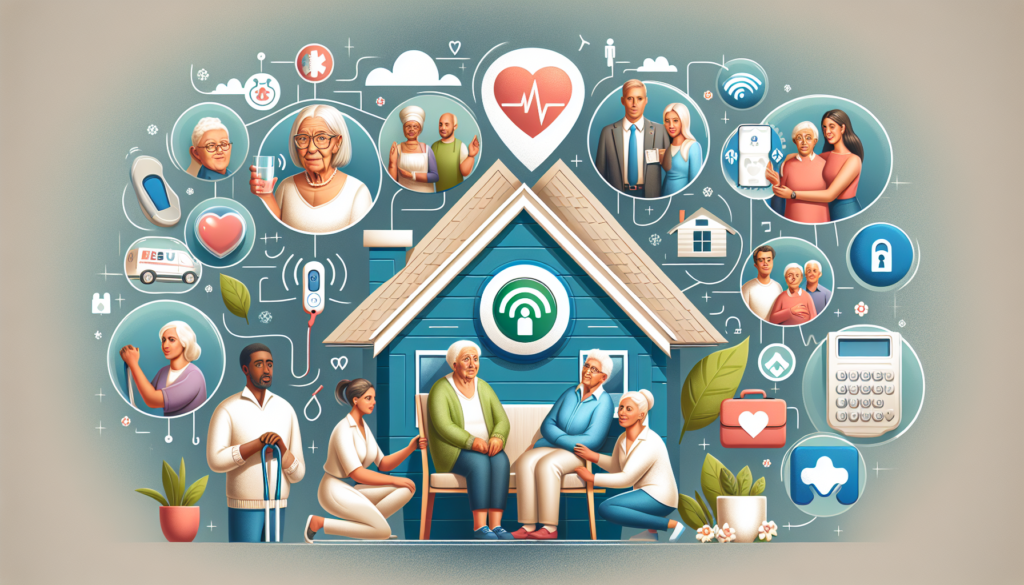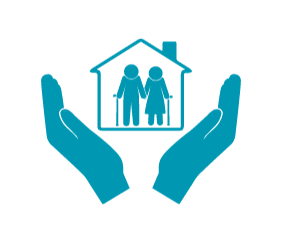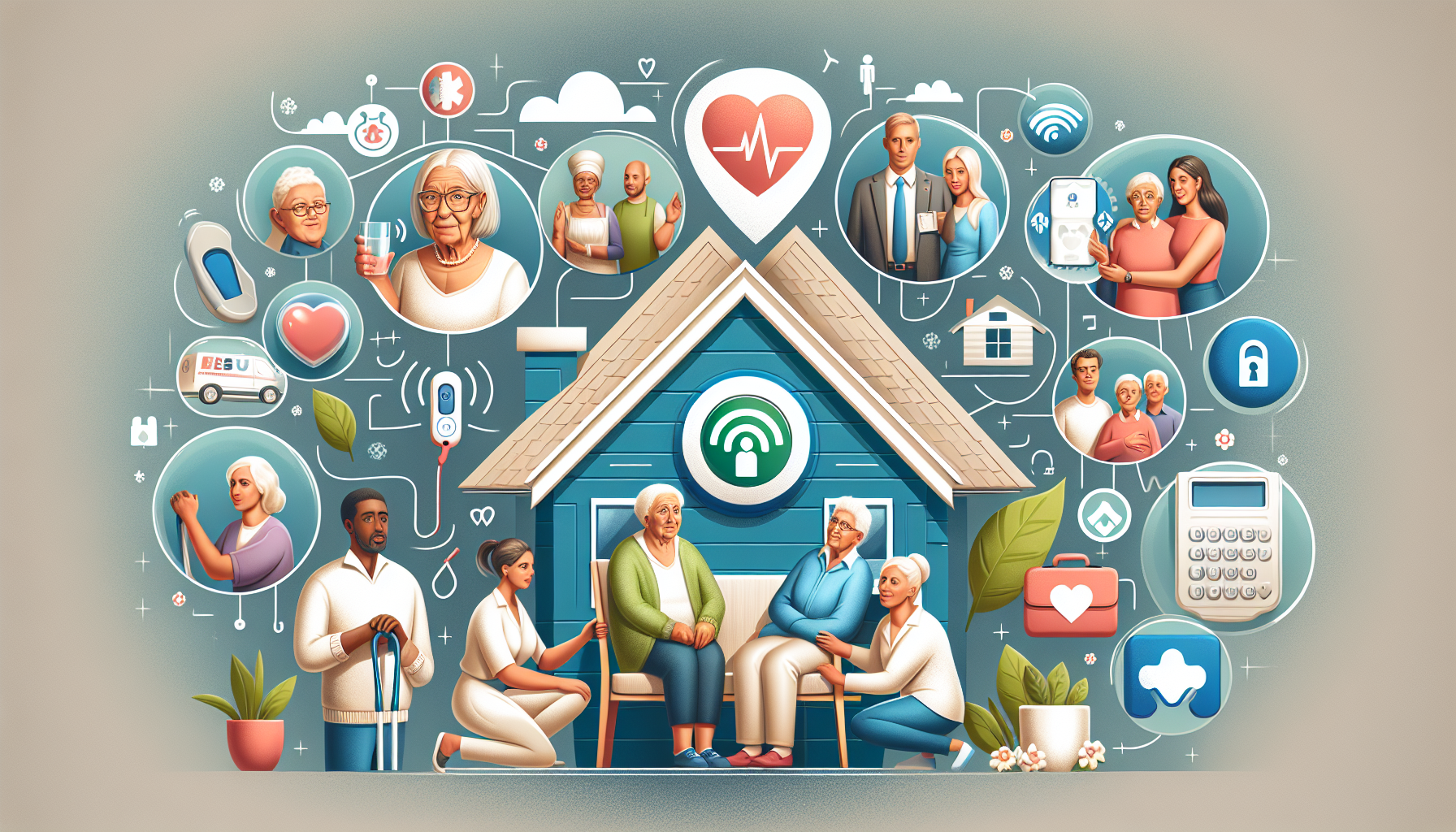In today’s fast-paced world, it is crucial to prioritize the safety and well-being of our elderly loved ones. Whether they are living independently or in a care facility, ensuring their safety becomes our responsibility. But how can you guarantee their safety? By taking proactive steps such as regular check-ins, installing safety devices, and promoting a supportive environment, you can provide a secure and comforting space for an elderly person. Let’s explore some effective strategies to ensure the safety of our beloved seniors.

Creating a Safe Living Environment
Home Modifications
When it comes to ensuring the safety of an elderly person, one of the first things to consider is making necessary home modifications. Assess the living space for potential hazards and take necessary steps to eliminate or minimize them. Some common modifications include installing handrails and grab bars in bathrooms, removing tripping hazards like loose rugs or cluttered pathways, adding adequate lighting in all areas of the home, and securing loose carpets or mats. By making these modifications, you can create a safer living environment for the elderly person.
Fall Prevention Measures
Falls are a major concern for older adults, causing injuries that can lead to hospitalizations and long-term consequences. To prevent falls, it is crucial to address fall risks within the living environment. Installing non-slip mats in the bathroom, using non-slip rugs or removing them altogether, ensuring proper lighting throughout the home, and securing loose cords or wires are effective measures to reduce the risk of falls. Additionally, considering the use of assistive devices such as handrails or walkers can greatly enhance safety and stability while moving around the house.
Fire Safety Precautions
Fire safety is essential for preventing accidents and injuries. Make sure all smoke detectors are installed and regularly tested. Have fire extinguishers readily accessible and ensure everyone in the household knows how to use them. It is also important to create an escape plan in case of a fire and practice it regularly. Keep flammable items away from heat sources, and avoid overloading electrical outlets. By taking these fire safety precautions, you can minimize the risk of fire-related incidents.
Medication Safety
Proper management of medications is crucial to ensure the well-being of the elderly person. Create a system to organize and keep track of their medications, including doses and schedules. Use pill organizers or set reminders to help them remember to take their medications on time. It is important to regularly review medications with a healthcare professional to ensure they are up to date and appropriate for the individual. Educate the elderly person about potential side effects and the importance of following prescribed dosage instructions. By ensuring medication safety, you can help prevent medication-related complications.
Building a Supportive Network
Family Involvement
Family involvement is key to creating a supportive and safe environment for an elderly person. Regular communication with family members helps to establish a strong support system. Check in with the elderly person frequently, both in person and remotely, to ascertain their well-being and address any concerns. Involving family members in decision-making processes regarding their care and safety can also be beneficial.
Caregiver Assistance
In situations where an elderly person requires additional support with daily activities, involving a caregiver can provide a sense of security. Caregivers can help with personal care, household chores, and even transportation needs. They can also act as companions, ensuring that the elderly person has someone to interact with regularly and help prevent feelings of isolation.
Community Resources
Take advantage of the many community resources available to support elderly individuals. Local senior centers often offer programs and activities that promote social interaction and mental stimulation. Many communities also have organizations that provide meal delivery services, transportation assistance, or even home modifications for seniors. Research the resources available in your area and connect with them to enhance the safety and support for the elderly person.
Emergency Contacts
In case of emergencies, it is important to have a list of emergency contacts readily available. Include the phone numbers of family members, caregivers, and neighbors who can be contacted in urgent situations. Additionally, make sure to have the contact information for the elderly person’s healthcare providers readily accessible. Having these contacts readily available can save valuable time in case of emergencies.
Regular Health Check-ups
Routine Medical Examinations
Regular health check-ups are essential for maintaining the well-being and safety of an elderly person. Schedule routine medical examinations to monitor their overall health and identify any potential health issues at an early stage. This may include checking blood pressure, cholesterol levels, and conducting general physical examinations. Regular check-ups allow healthcare professionals to provide appropriate preventive measures and ensure timely intervention if needed.
Screenings and Tests
Age-appropriate screenings and tests can help identify potential health risks in elderly individuals. These may include screenings for vision and hearing problems, bone density tests, and cancer screenings. By conducting these screenings regularly, potential health concerns can be detected early and appropriate interventions can be initiated.
Vaccinations
Ensuring that the elderly person is up to date on vaccinations is vital for their safety. Immunizations such as the influenza vaccine and pneumonia vaccine can help prevent serious illnesses that can negatively impact their health. Consult with healthcare professionals to ensure that the elderly person receives all necessary vaccinations as recommended for their age.
Nutrition and Exercise
Balanced Diet
A balanced diet is fundamental for promoting health and safety in elderly individuals. Ensure that their meals consist of a variety of nutritious foods, including fruits, vegetables, lean proteins, whole grains, and low-fat dairy products. Avoid excessive sodium and sugar intake. Monitor their dietary intake and make necessary adjustments to address any specific dietary needs or restrictions. A balanced diet provides essential nutrients for overall well-being and helps prevent diet-related health issues.
Meal Preparation Assistance
Some elderly individuals may require assistance with meal preparation, especially if they have mobility or cognitive challenges. Consider providing meal preparation assistance or engage the services of a caregiver to ensure that nutritious meals are prepared and safely stored. This helps to prevent malnutrition and foodborne illnesses.
Physical Activities
Encouraging regular physical activities is vital for the safety and well-being of elderly individuals. Engaging in activities such as walking, swimming, or tai chi can improve balance, strength, and flexibility, reducing the risk of falls and injuries. Encourage the elderly person to participate in activities that they enjoy and are suitable for their physical abilities. Consult with healthcare professionals to determine appropriate exercises for their specific needs and capabilities.
Exercise Routines
Establishing exercise routines can help maintain regular physical activity. Set aside dedicated time for exercise each day and encourage the elderly person to adhere to the routine. Consider joining exercise classes or programs specifically designed for older adults to promote social interaction and motivation. Creating a habit of regular exercise contributes to their overall physical health and enhances safety by keeping them active and strong.
Specialized Assistive Devices
Mobility Aids
Mobility aids such as canes, walkers, or wheelchairs can greatly enhance the safety and independence of elderly individuals with mobility issues. Consult with healthcare professionals to determine the most appropriate mobility aids for their specific needs. Ensure that the aids are properly maintained and regularly inspected for any necessary repairs or adjustments. By utilizing these devices, the elderly person can move around their living environment with greater stability.
Safety Alarms
Safety alarms can provide an additional layer of protection for elderly individuals. Install smoke detectors and carbon monoxide detectors throughout the home to alert them in case of potential hazards. Consider installing fall detection systems or wearable devices with emergency call buttons that can be activated in case of an accident or medical emergency. These safety alarms can provide peace of mind and prompt assistance when needed.
Home Monitoring Systems
Home monitoring systems, equipped with features such as video cameras and motion sensors, can help monitor the elderly person’s activities and detect any potential risks or incidents. These systems can provide real-time alerts to caregivers or family members, allowing them to check on the well-being of the elderly person remotely. Home monitoring systems can be valuable tools for ensuring the safety and overall well-being of elderly individuals, especially when living alone.
Daily Living Assistance
Personal Care Support
Assistance with personal care activities, such as bathing, grooming, and dressing, can help maintain the safety and dignity of elderly individuals. If they have difficulty performing these tasks independently, consider providing the necessary support or involving a caregiver. Regularly review their personal care routine to ensure it meets their specific needs and adapt it as required.
Household Chores
Household chores can become more challenging for elderly individuals. Offer assistance with tasks such as cleaning, laundry, and meal preparation. Engage in regular maintenance checks to identify and address any potential safety hazards within the home. If necessary, consider outsourcing certain chores or involving other family members or caregivers to ensure that the elderly person’s living environment remains clean and well-maintained.
Transportation Services
Accessible transportation is crucial for elderly individuals, especially when they have medical appointments or need to run errands. Arrange for transportation services that cater to their specific needs, such as wheelchair-accessible vehicles or assistance getting in and out of vehicles. Public transportation options should also be explored, such as utilizing senior-friendly transportation programs. Reliable transportation services help ensure that the elderly person can safely and conveniently travel to and from various destinations.
Financial Management
Assist with financial management to help safeguard the elderly person’s financial well-being. Offer guidance in managing bills, monitoring financial transactions, and ensuring that important documents, such as wills and insurance policies, are organized and up to date. Assistance with financial matters helps prevent financial exploitation and ensures that the elderly person’s financial resources are appropriately managed.
Preventing Social Isolation
Encouraging Social Interaction
Promoting social interaction is important for maintaining the mental and emotional well-being of elderly individuals. Encourage them to reach out to friends, family, and neighbors for regular socialization. Help them stay connected through phone calls, video chats, or social media platforms. Organize family gatherings or outings to provide opportunities for social interaction. By fostering social connections, you can help prevent feelings of isolation and support their overall well-being.
Engaging in Hobbies and Activities
Encourage the elderly person to engage in hobbies and activities that they enjoy. Whether it is reading, gardening, crafting, or participating in community events, engaging in meaningful activities helps to keep their minds active and provides a sense of purpose. Explore local community centers or senior programs for activity options tailored to their interests. Engaging in hobbies and activities improves their mental well-being and prevents social isolation.
Joining Senior Community Programs
Senior community programs offer various opportunities for social engagement and support. Encourage the elderly person to join programs or clubs specifically designed for older adults. These programs often provide activities, educational sessions, and social events that promote interaction with peers. Connecting with others who share similar interests and experiences can foster a sense of belonging and provide a supportive community for elderly individuals.
Ensuring Mental Well-being
Regular Mental Health Check-ups
Regular mental health check-ups are important for assessing and addressing any cognitive or emotional changes in elderly individuals. Speak with healthcare professionals to schedule regular appointments to monitor and evaluate their mental well-being. This may involve cognitive assessments or screenings for conditions such as depression or anxiety. Early detection and intervention can help manage any mental health concerns and promote overall well-being.
Counseling and Therapy
In situations where additional support is needed, consider involving a counselor or therapist who specializes in working with elderly individuals. Counseling or therapy sessions can provide a safe space for the elderly person to express their feelings, address emotional challenges, and gain coping strategies. Professional support contributes to their mental well-being and enhances their overall sense of security and happiness.
Supportive Emotional Environment
Creating a supportive emotional environment is key to ensuring the mental well-being of elderly individuals. Offer emotional support, actively listen to their concerns, and be empathetic in all interactions. Encourage open communication and engage in meaningful conversations to foster a sense of connection. Being understanding, patient, and compassionate helps to create a positive atmosphere that promotes mental well-being and makes the elderly person feel safe and valued.
Emergency Preparedness
Emergency Evacuation Plan
In the event of an emergency, having an evacuation plan is crucial for the safety of elderly individuals. Identify multiple evacuation routes from the home and ensure that everyone in the household is familiar with them. Practice evacuation drills regularly to ensure that the elderly person can safely and efficiently leave the home if needed. Include a plan for any necessary medical equipment or supplies during an evacuation. By preparing for emergencies in advance, you can mitigate potential risks and ensure the safety of the elderly person.
Medical Alert Systems
Medical alert systems can provide peace of mind and prompt assistance in case of emergencies. These systems typically include wearable devices or home-based devices equipped with emergency buttons. In the event of an accident or medical emergency, the elderly person can press the button to alert emergency responders or designated contacts. Consider the specific needs and preferences of the individual when selecting a medical alert system to ensure optimal safety.
Knowledge of Emergency Procedures
Ensure that the elderly person is familiar with emergency procedures and knows what to do in different types of emergencies. Provide them with clear instructions on actions to take during a fire, power outage, severe weather, or other potential emergencies. Create emergency kits that include essential supplies such as food, water, medications, and basic first aid items. By equipping the elderly person with the knowledge and resources needed, you can enhance their safety during unforeseen events.
Regular Communication and Check-ins
Parent-Child Communication
Maintaining open and regular communication between the elderly person and their children or primary caregivers is essential for their safety. Establish a communication routine that includes regular check-ins and updates on their well-being. Ensure that any concerns or issues are promptly addressed and resolved. Consistent communication helps to identify any changes in their needs or safety requirements and allows for timely adjustments in caregiving approaches.
Monitoring Systems
Utilize monitoring systems to stay informed about the well-being of the elderly person. This may involve using technology such as video calls, remote monitoring devices, or wearable sensors. These systems provide real-time information, allowing you to assess their safety and well-being remotely. Regularly review the data from monitoring systems and address any concerns or necessary interventions promptly.
Scheduled Check-ins
In addition to regular communication, schedule specific check-in times to provide dedicated attention to the elderly person’s safety and needs. Set aside time to discuss any changes in their health, well-being, or living environment. Use these check-ins as an opportunity to evaluate the effectiveness of the implemented safety measures and make any adjustments as required. Scheduled check-ins ensure that the elderly person’s safety remains a priority and that their needs are consistently met.
In conclusion, ensuring the safety of an elderly person involves various aspects, including home modifications, fall prevention measures, fire safety precautions, medication safety, building a supportive network, regular health check-ups, nutrition and exercise, specialized assistive devices, daily living assistance, preventing social isolation, mental well-being, emergency preparedness, and regular communication and check-ins. By addressing each of these areas comprehensively, you can create a safe living environment and provide appropriate support to enhance the overall well-being of elderly individuals.


